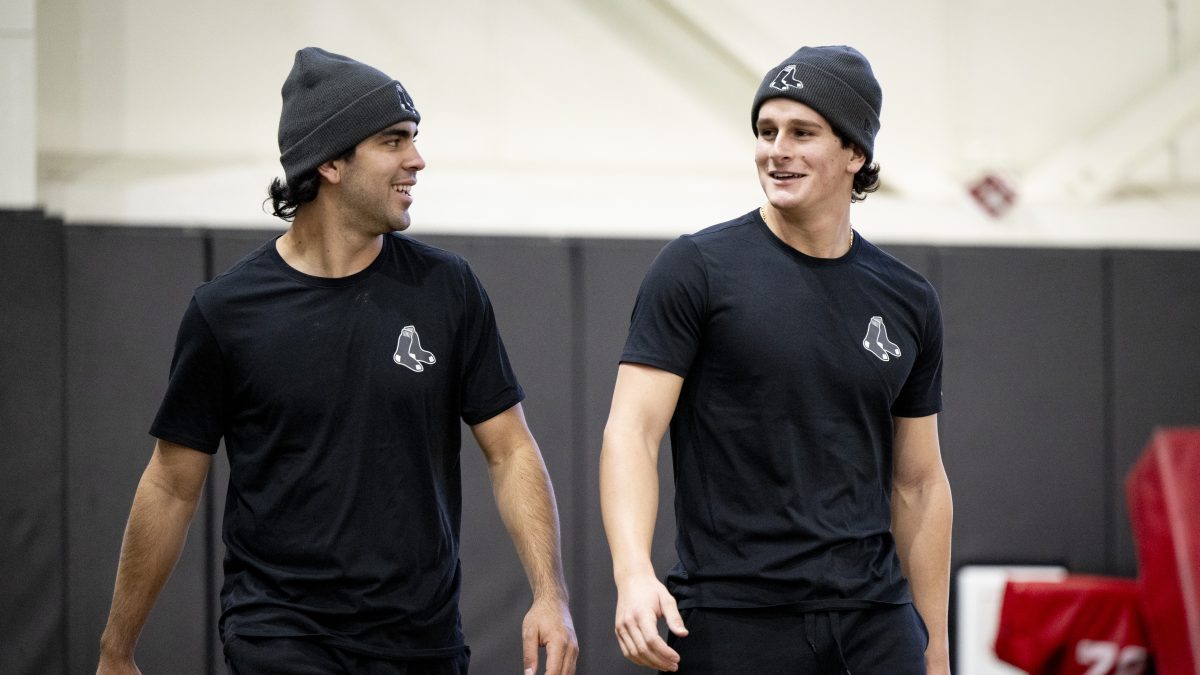
NEW YORK -- Steven Wright doesn't profile as your typical rookie pitcher.
For one thing, he's 30 years old and pitched, however, briefly, as far back as the 2013 season.
Then again, Wright isn't your typical pitcher -- rookie or otherwise.
Unlike Luis Severino, the New York Yankees starter who opposed him Wednesday night while making his major league debut, Wright doesn't throw 97 mph.
Heck, most times, Wright barely reaches 77 mph. But on nights like Wednesday, when his trademark knuckler darts and dives with what his manager labeled "violence,'' it's the hitters who appear to be neophytes.
In what was likely the best start of his major league career, Wright limited the Yankees to just one run over eight innings and struck out a career nine in a 2-1 Red Sox victory.
Pitching, after all, is not about who can throw the hardest. It's about disrupting the timing of hitters, and when Wright's knuckler is on, few do that better.
Boston Red Sox
"Outstanding effort,'' gushed John Farrell of Wright. "He had the feel for his knuckleball much earlier than he did six days ago. He kept guys off-stride, obviously, with some variation to the speed to the knuckleball. He threw a number of them with good violence to them and a lot of strikes with it.
"He was good the last time out. I don't want to take that away from him. But given this lineup (which leads MLB in runs scored since the All-Star break), this ballpark with the short porch in right...he was outstanding from start to finish. That's probably as good as Steven has thrown for us.''
Wright struck out five in the first two innings and the Yankees didn't put the ball in play until the eighth hitter faced him, producing a routine flyout to right.
The Yankees went hitless until Didi Gregorius singled up the middle with one out in the fifth.
But even before that, Wright could tell the knuckleball was particularly elusive, striking out three in the first inning and two more in the second.
"Early on, I felt like it was moving pretty late,'' said Wright, "and so I just had to contain it. It got a little wild on me early on (with two walks to the first five hitters). That's where Blake (Swihart) helped me out a lot, trying to keep me under control, because sometimes when I see it moving that much, I try to overthrow it instead of just continuing to repeat my delivery.''
Wright also credited Tim Wakefield, who worked with Wright over the last homestand and detected a few mechanical flaws. Wakefield's tutorial preceded two starts in which Wright has pitched 15 innings combined with three runs allowed and 17 strikeouts recorded.
"It was a little mechanical and a lot of mental stuff,'' said Wright. "It helps me stay calm and put myself in a position to make a quality pitch.''
Finally, there's Wright's ability to change speeds on the knuckleball, something he's done far more this season than previous ones. It's one more weapon -- adding and subtracting velocity -- to keep hitters off-balance.
"Earlier in the year,'' noted Farrell, "he was getting beat with the slow knuckleball with two strikes and he's made a conscious adjustment to stay with the hard one when he's got a chance to put a hitter away. He's used the slower one in earlier counts, so it's the continued adjustments that he's making.''
The start lowered Wright's ERA for the season to 4.12, which is the lowest for any Red Sox starter except the injured Clay Buchholz.
Pretty good for a rookie -- even one who's 30.
"I got a late start with the knuckleball,'' shrugged Wright. "I wasn't sure it was even going to work out throwing it. I was pretty close to giving it up because it's such an unpredictable pitch.''


